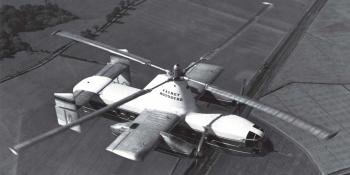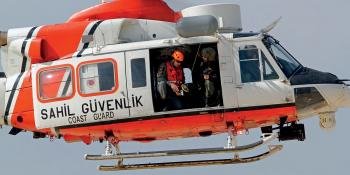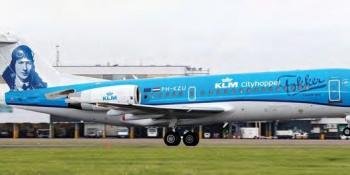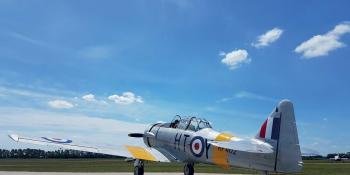The Armée de l’Air and Marine Nationale are co-operating closely on the operational evaluation of Standard F3R, the latest evolution of the Rafale omnirole fighter. Henri-Pierre Grolleau reports from Mont-de-Marsan.

The F3R designation adopted for the latest Rafale upgrade package is somewhat misleading.
It suggests the new variant is a limited update of the previous Standard F3, another of its sub-standards (the latest of which is F3.4+), but it is in fact among the most ambitious Rafale upgrades of the last decade.
The sweeping changes introduced in Standard F3R have led the Centre d’Expertise Aérienne Militaire (CEAM, centre of military air expertise, also known as the French air warfare centre) and the Centre d’Expérimentations Pratiques de l’Aéronautique Navale/Escadrille 10S (CEPA/10S, the French naval aviation operational evaluation unit) to launch a complex joint evaluation.
Expanded capability
The F3R programme modernises almost every Rafale system. The aircraft has been equipped with an automatic ground collision avoidance system (AGCAS), reducing the risk of controlled flight into terrain (CFIT), g-induced loss of consciousness (G-LOC) and spatial disorientation.
With Standard F3R, Rafale is now fitted with Mode S and Mode 5 identification friend or foe (IFF) interrogators. Its RBE2 electronically-scanned radar, Spectra electronic warfare/self-protection suite and Link 16 (L16) data link have all been improved to boost its offensive and defensive capabilities, enhance its ability to survive against the latest threats and improve its connectivity with other assets on the battlefield.
Three new weapons have also been introduced with Standard F3R, the Meteor airto-air missile (AAM), 1,000lb-class GBU-16 Paveway II laser-guided bomb (LGB) and the Block 3 variants of the Highly Agile, Modular Munition Extended Range (HAMMER) family of precision weapons. Finally, the TArgeting Long-Range Identification Optronic System (TALIOS) pod replaces the Damoclès pod for targeting and reconnaissance missions.
CEAM’s central role
The CEAM is playing a key role in the service entry of the Standard F3R with several of its subordinate units involved. Colonel Nicolas (all surnames withheld on request), CEAM’s deputy commander, explains: “The Standard F3R operational evaluation is a joint effort, conducted in close co-operation with our colleagues at the DGA [Direction Générale de l’Armement, the French armament procurement agency] and CEPA 10S. The CEAM provides its expertise in a wide range of areas; our detachment at Istres, for example, actively participated in the flight trials alongside Dassault Aviation and DGA flight test crews. Our cyber warfare project team is involved in the F3R service acceptance process, its experts checking how robust its systems are against computer-based threats. This aspect of warfare has become a genuine concern for the CEAM.”
Standard F3R operational evaluation began in earnest in late 2018. Commandant (Major) Thibaud, head of ECE 1/30’s Rafale project team, says: “We received our first upgraded aircraft, a Rafale B two-seater, on December 10, 2018, followed eight days later by a Rafale C single-seater. In all, three Rafale Bs and three Rafale Cs will be used in the operational evaluation from Mont-de-Marsan. A mix of two-seaters and singleseaters is required to complete trials across the full spectrum of Rafale missions.
“Enhancements are mainly limited to the Rafale’s software, even though a number of new equipment items have also been introduced, including Meteor pylon adaptors and the TALIOS pod. The trials are complicated by the fact that the new and modernised systems ‘talk’ to one another and exchange data with other, unmodernised systems. We need to ensure there are no communications issues.
“The L16, for example, shares information with the central processor, which itself receives data from various sensors. The airto-air and air-to-ground fire control systems have also been significantly improved, and everything is closely integrated. In this respect the Standard F3R perhaps represents the most important Rafale evolution since service entry.”
The CEAM team initially focused on proving the integrity of the jet’s basic functionalities, including flight controls, inertial navigation systems and the automatic terrain-following system. “Subsequently,” Thibaud explains, “we switched our attention to the AGCAS. Standard F3.4+ already includes a ground collision avoidance system, but it’s not as sophisticated as AGCAS.
“The new system constantly assesses risk, taking into account aircraft speed, attitude and altitude. If the pilot does not react to audio and visual warnings, the system initiates recovery in a timely, vigorous manner, safely returning the Rafale to wingslevel flight in a gentle climb. For obvious safety reasons, great care was needed during the AGCAS evaluation.

SLPRM V6
Before and after every flight, Rafale crews rely on the Système Local de Préparation et de Restitution de Mission (SLPRM, local mission planning and debriefing system) to programme the Rafale’s mission and navigation systems and debrief the sortie. A new SLPRM version has been developed for the Standard F3R, as Capitaine Frédéric, a lead pilot involved in SLPRM evaluation, explains: “It remains fully compatible with the Mirage 2000-5F and Mirage 2000D versions of the system. Designated V6, the latest variant supports the new functionalities of the latest Rafale evolution. The interface and core system are unaltered, but additional modes have been introduced and some display formats modified.
“For example, Meteor is slightly larger and heavier than Mica and, as a result, fuel consumption increases a little when Meteor is carried. The new software takes that into account, thanks to updated drag indices provided by Dassault Aviation. Similarly, upgraded firing charts have been added for the Block 3 variant of the HAMMER family.
“New options have been introduced for TALIOS, enabling SLPRM to manage the photographic and video data accumulated during the non-conventional intelligence, surveillance and reconnaissance mission. Similarly, the L16 free text/chat functionalities are supported within SLPRM through pre-formatted messages that crews will be able to choose from. Finally, new programming options have been added for the Mode 5 and S IFF systems.” The Système d’Enregistrement et de Restitution des Paramètres Avion-Missile (SERPAM, aircraft-missile data recording and debriefing system) tool used to debrief a fight and verify if simulated missile shots were valid once back on the ground, has also been upgraded to take Meteor into account.
“We created artificial high ground in the system’s digital database in order to carry out our tests with a good safety margin. We then deliberately dived to the simulated hard deck, at speeds and angles that would trigger the AGCAS, without risking collision with the ground, which was well below our simulated hard deck. Once that phase was complete, we switched to live testing, in conditions and scenarios representative of all the Rafale’s missions.”
TALIOS pod
The TALIOS targeting pod offers longer detection and tracking ranges than Damoclès and address the older system’s other operational shortcomings. TALIOS employs new high-resolution sensors, a near-infrared (visible spectrum) camera and an infrared unit, Damoclès managing with only one ageing IR sensor. Image quality is significantly improved at similar ranges. Using TALIOS, pilots will be able to engage targets from further away, or choose more favourable directions of attack.
According to Colonel Nicolas: “The infrared sensor is especially effective at night compared to Damoclès. And, thanks to the near-infrared sensor, aircrew will also have a decisive advantage in positively identifying targets in daytime. TALIOS can also track and identify airborne targets at very long ranges.”
The first TALIOS pod was delivered to the CEAM in early 2019. “We have to test all its functionalities,” Thibaud says. “For example, we need to ensure that its laser ‘spiking’ works as advertised, guiding bombs to direct hits. Damoclès ‘switchology’ has been slightly altered to suit TALIOS too, and that will also have to be tested.”
Meteor AAM
In the ramjet-powered Meteor, Armée de l’Air and Marine Nationale crew have at their disposal the most lethal long-range air-toair weapon in service anywhere. Developed by MBDA, Meteor employs an active radar seeker derived from that of the Mica and Aster missiles. In addition, the weapon has been designed to withstand the violent shocks and stresses associated with catapult launches and carrier landings. Nicolas reckons: “Meteor offers the French armed forces exceptional ‘Day One’ entry capabilities into a new combat theatre, providing a crucial operational advantage.”
The joint air force/navy Meteor operational evaluation began in January 2019. It covers a wide range of scenarios against fast and slow targets. Test firings are performed over the Mediterranean or the Atlantic, the launch aircraft usually taking off from Cazaux. Because of the Meteor’s huge engagement range, stringent precautions are taken prior to every launch. The airspace is constantly monitored, the sea cleared of shipping and the missile fitted with a self-destruct charge rather than a warhead so that it can be destroyed in flight should a problem occur.
At the time of writing, an undisclosed number of Meteors had been fired: “Missile launch is almost a non-event,” Thibaud says.
”Enhancements are mainly limited to the Rafale’s software, even though a number of new equipment items have also been introduced…”


“Even though it’s larger than Mica, Meteor is quite light. As a result, the effect when it is ejected from the pylon is minimal and we barely feel anything from the cockpit; we don’t hear it either. A bomb dropping from a wing station has a more noticeable effect, the wings rocking slightly as it leaves its rack; a salvo of six HAMMERs fired in quick succession is more impressive, but since Meteor is ejected from the rear fuselage pylons we don’t see anything until it appears ahead of us, by which time it is already far away.”
HAMMER Block 3
The Block 3 variant of HAMMER is entering service on Rafale F3R. The updated variant benefits from the introduction of new software, expanding its capabilities, addressed. Nicolas explains: “Block 3’s main advantage comes from the fact that the fusing can now be programmed in flight, enabling crews to modify the weapon’s effects at will. Until now, fusing had to be selected on the ground. Block 3 therefore brings enhanced operational flexibility, crews being able to select airburst, impact or delay modes. The delay can even be adapted to increase the weapon’s destructive power depending on the type of structure targeted.”
Rafale F3R is required to launch all inservice air-to-surface weapons, and trials to validate this backwards compatibility have seen a majority of launches performed by CEAE and navy aircrews.
Examples of every HAMMER variant – inertial/GPS, infrared and semi-active laser guided – and most of the current Paveway variants – GBU-12, GBU-16 and GBU-24 – were expended during sorties out of Cazaux.
Pod Reco NG V8
Dassault Aviation and Thales have improved the Pod Reco NG (New Generation Recce Pod, known as the Airborne Recce Observation System (AREOS) for export) for Standard F3R.
Software changes have enhanced the quality of the pod image displayed in the Rafale’s cockpit – the image had previously been difficult to see in some conditions. Crews do not perform imagery interpretation in flight (it is the responsibility of the photo-interpretation experts on the ground), but display quality is essential to help them ensure that the target was properly imaged during a recce pass.
“Pod Reco NG trials began in April 2019 because we waited for the better spring weather to help us find targets more easily,” Capitaine Jérôme says. “Thanks to the software enhancements it is now easier for the pilot or WSO [weapon system operator] in the back to check if the pass was successful, because the saturation issues we previously had with the position of the sun, the angle of the photography and terrain overflown have been overcome.
Only five evaluation sorties are required, with mission profiles chosen based on data provided by the DGA.”
Hot Weather Trials
The CEAM is taking advantage of the synergies between its Istres and Montde-Marsan teams to set up a joint hot weather trials campaign for the A330 MRTT and Rafale F3R. “This summer we are deploying a Phénix and two Rafale F3Rs to Base Aérienne 104 at Al Dhafra, United Arab Emirates, for a series of trials in hot, arid conditions,” Colonel Nicolas says.
“The two-week, intense period of trials will enable us to ensure TALIOS works as expected in demanding operational conditions, and especially its infrared sensor. The obvious advantage of a deployment to the UAE is that we’ll be flying Rafale F3R in an environment similar to the operational theatres our fighters routinely deploy to.”



IFF and L16
The Mode 5 IFF is derived from the Mode 4 system, including more robust encryption.
Capitaine Jérôme, an ECE 1/30 Rafale project team pilot reports: “The system works as advertised. Trials began on the ground, using an antenna connected to a dedicated test bench. Next, another ground test, this time at Avord, co-ordinated with an E-3F AWACS. The Mode 5 interrogator was also tested against other Rafales and Mirage 2000Ds fitted with the Mode 5.”
Rafale was equipped with the civilian Mode S transponder at F3.4+. “With the advent of F3R, we can now interrogate an aircraft equipped with a Mode S transponder,” Jérôme explains. “A QRA fighter scrambled to intercept an airliner will instantly be able to check if the aircraft being tracked is the correct one, since its registration number and flight level will appear on-screen in the cockpit.”
Link 16 is also improved under F3R. “Rafale is now capable of reading the J-type messages widely used by forward air controllers,” Nicolas reveals. “The chat/free text mode that has been available on the Mirage 2000D for a couple of years has now been adopted on the Rafale too. With these two modifications, the jet is better connected to joint terminal attack controllers on the ground, to other fast jets and to command and control systems.”

CEAM units involved in Standard F3R service entry
• Escadron de Chasse et d’Expérimentation 1/30 ‘Côte d’Argent’ (ECE 1/30, combat and operational evaluation squadron); both its dedicated Rafale teams are involved
• Centre d’Expertise et d’Instruction des Liaisons de Données Tactiques (CEILDT, or data link expertise and training centre), formed within CEAM in 2012 as a means of increasing the operational efficiency of frontline units employing L16 and other networks
• Escadron de Programmation et d’Instruction à la Guerre Electronique (EPIGE, electronic warfare mission data and training squadron), a tri-service unit providing EW threat libraries to air force, navy and army aircraft
• Centre d’Expertise des Armements Embarqués (CEAE, airborne weapons expertise centre), an embedded CEAM detachment stationed at Cazaux
• Équipe de Marque Cyber (cyber warfare project team)
• Équipe de Marque Ravitaillement et Transport Stratégique (tanker/ transport project team) at Istres
Ramp up, ramp down
Rafale F3R service entry has been carefully planned as part of a ramp-up/ramp-down process that will maintain operational strength with Standard F3.4+ aircraft until sufficient numbers of Standard F3R aircraft are available. At the same time, aircrew and engineers need to be trained on the new variant’s differences.
The Saint-Dizier and Mont-de-Marsan wings (4ème and 30ème Escadres de Chasse, respectively) are busy preparing for the arrival of their F3R fighters. At Mont-de-Marsan, the Centre de Formation Rafale (CFR, or Rafale training centre) has adapted its syllabus to the upgraded standard.
Commandant Damien, 30ème Escadre Chief of Operations, explains: “Experienced pilots will follow a two-or three-day conversion course. The conversion process began in mid-April with the initial instructors, who will then pass their knowledge on. With AESA [active electronically-scanned array] radar and Meteor missiles, the Rafale will become a true game-changer in the air-to-air role. It’s a huge step forward.
“Mica offers an engagement range similar to that of foreign AAMs.
Multinational exercises have nevertheless shown that we have to take risks to maintain, or reacquire, air superiority. The situation is totally different with Meteor. But this change in paradigm will force us to re-evaluate our tactics, which will have to be reviewed in depth.
“In my opinion, Meteor will be more of an offensive tool than a defensive asset. In the offensive counter air role, it will allow us to wipe our opponents out of the sky.
Its huge ‘no escape zone’ creates a safety bubble around us, around the high-value asset we are protecting, or around the geographical location we are defending. Devising new, advanced tactics will need lots of simulator time.”
Thanks to the concerted efforts of the DGA, CEAM and CEPA, Standard F3R service entry with the Armée de l’Air will be extremely rapid. Initial operational capability is expected in autumn 2019, with full operational capability following in the second quarter of 2020. All navy and air force Rafales will have been upgraded to Standard F3R in less than two years.
”With AESA [active electronicallyscanned array] radar and Meteor missiles, the Rafale will become a true game-changer in the air-to-air role.”





